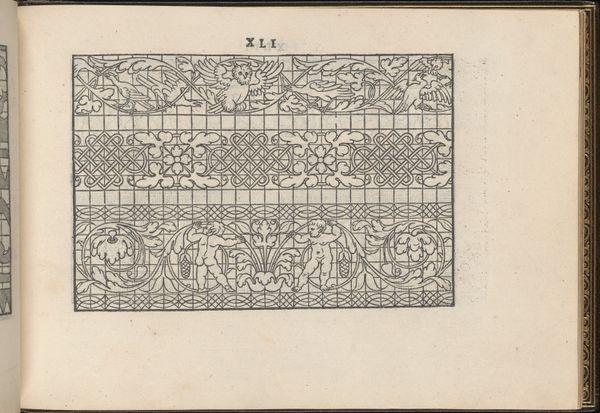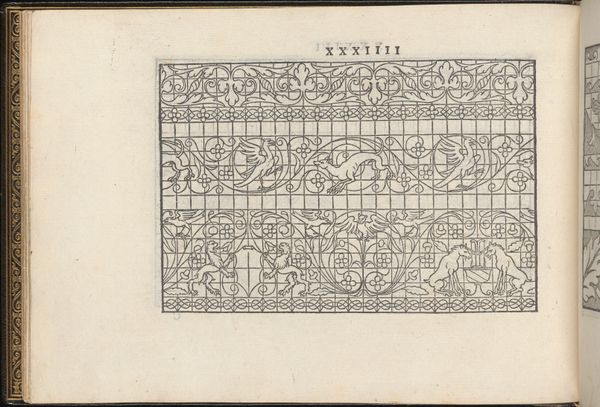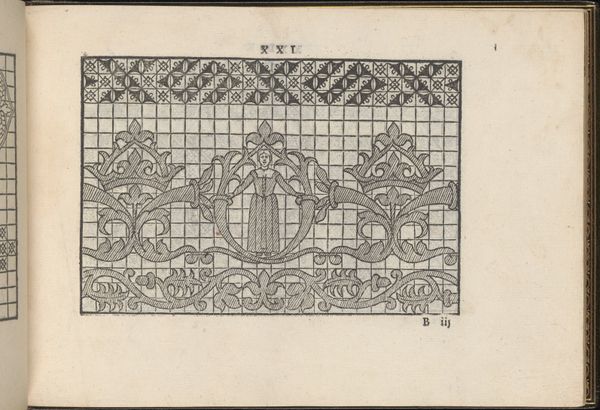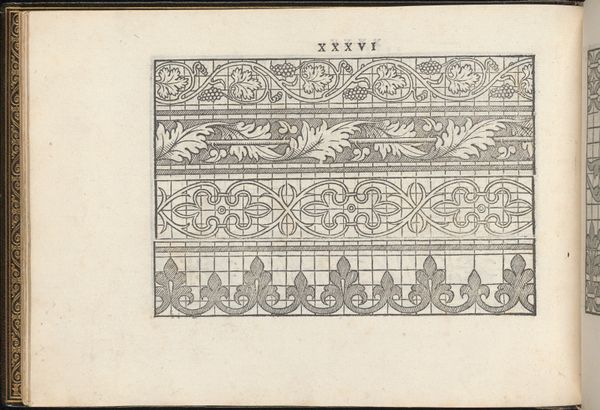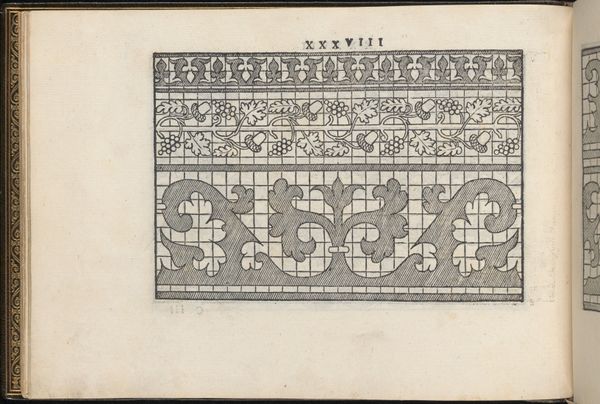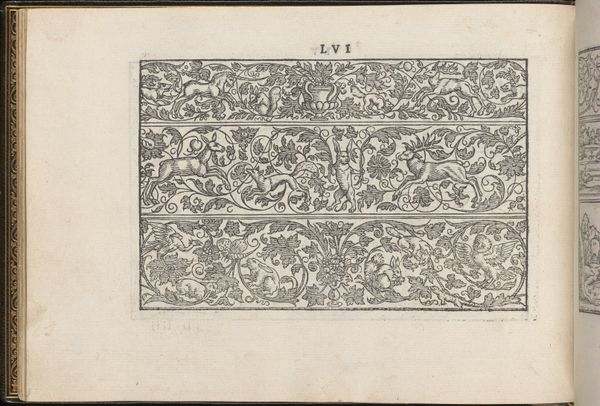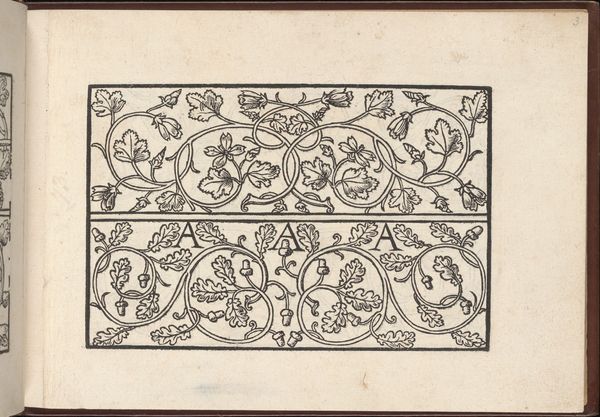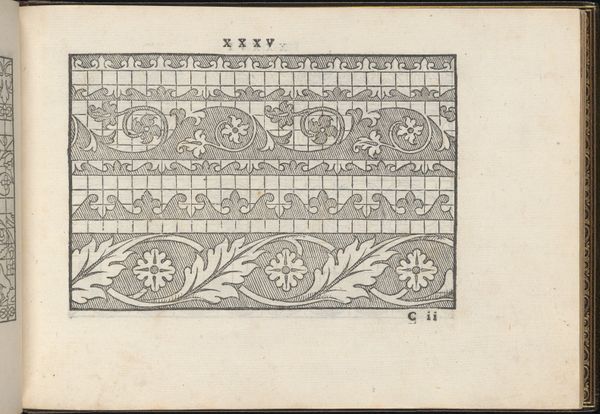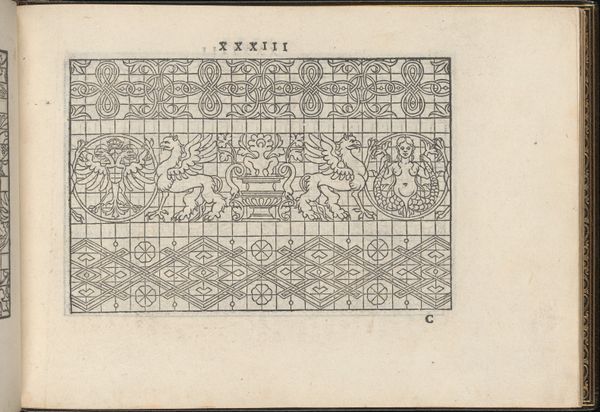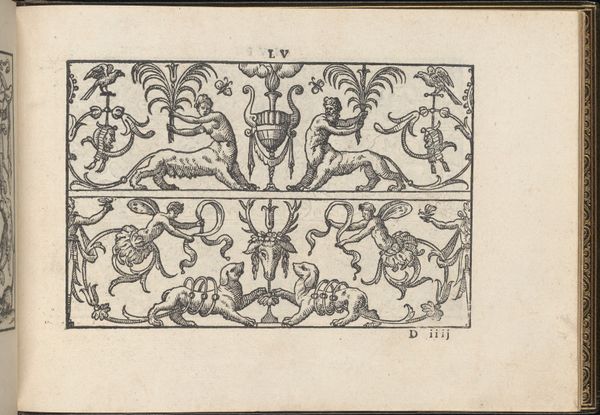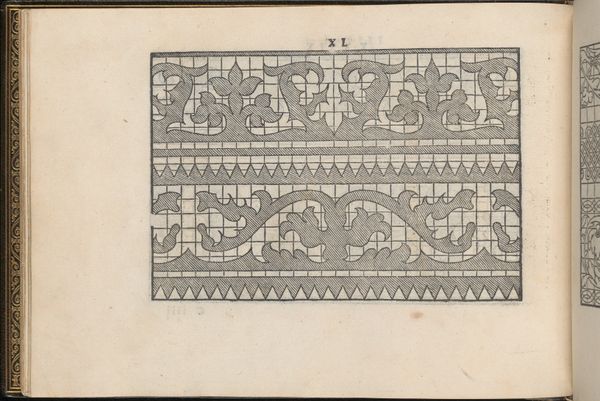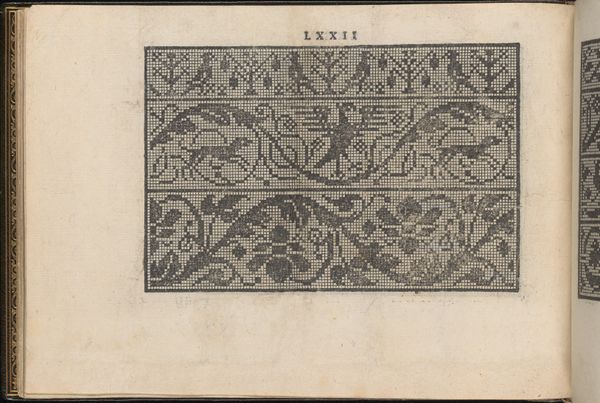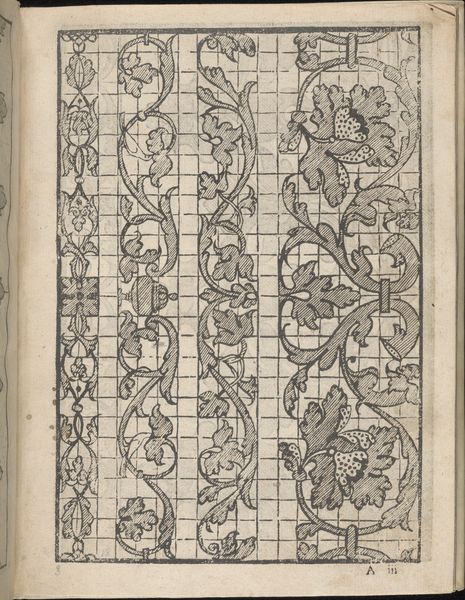
La Vera Perfettione del Disegno di varie sorti di recami, page 15 (recto) 1567
0:00
0:00
drawing, print
#
drawing
# print
#
11_renaissance
#
geometric
#
line
Dimensions: Overall: 6 5/16 x 8 7/16 in. (16 x 21.5 cm)
Copyright: Public Domain
Editor: This is page 15 from Giovanni Ostaus's "La Vera Perfettione del Disegno di varie sorti di recami," a drawing and print from 1567. The intricate patterns, almost like stencils, give off a vibe of precision. How do you interpret this work, especially considering the historical context? Curator: This print exists not just as an aesthetic object but as a tool, a pattern book, and as a reflection of 16th-century artisanal labor and gender roles. It invites us to think about the lives of women and other artisans involved in textile production, and how the regimented grid structure and the very act of replicating these patterns played into notions of discipline and control within those workshops. Does the rigid structure perhaps speak to a constrained role in the broader society? Editor: That's a fascinating connection! I hadn't thought about the potential social implications embedded within something seemingly so decorative. I was just looking at the birds woven into some of the patterns, such gentle figures against such hard lines. Curator: And who had access to it, what were the skills that people were developing with the dissemination of the work? Were all artisans afforded access to guides, and where does this fit into our understanding of the period? Those birds offer a subtle counterpoint, perhaps representing a yearning for freedom within these structures, don't you think? The tension speaks volumes. Editor: Definitely. Considering the birds and flowers contained within the gridded constraints, and thinking about those women...It encourages me to re-evaluate this as not just a set of templates, but a social artifact reflecting labor and the restricted roles available for women during the Renaissance. Curator: Exactly! It makes you think, right? It becomes less about beauty, and more about cultural norms, right? And if art does not inspire debate about history, progress and identity then is it actually reflecting a critical perspective on those who consume it? Editor: It really does. Thank you for sharing such a critical perspective. Curator: My pleasure.
Comments
No comments
Be the first to comment and join the conversation on the ultimate creative platform.
